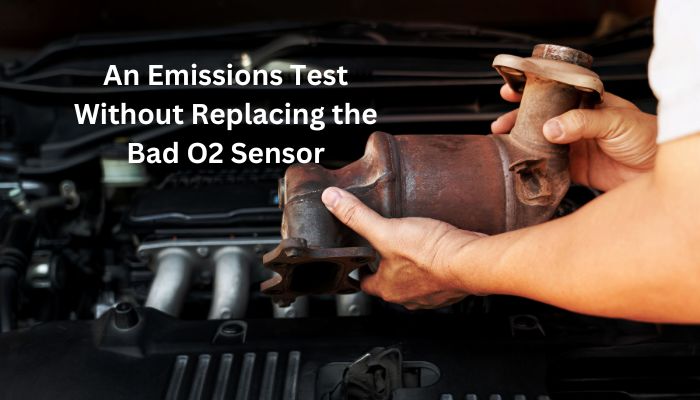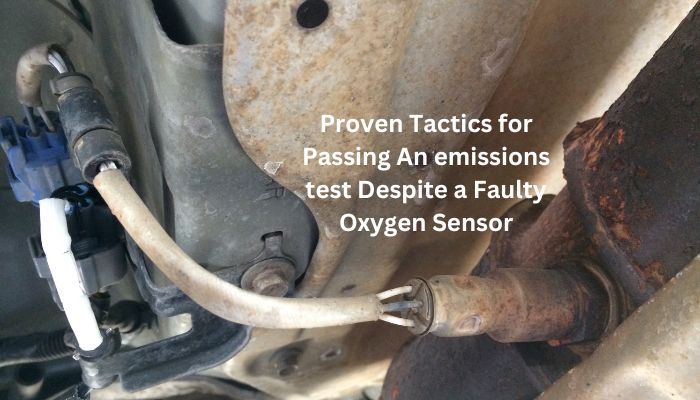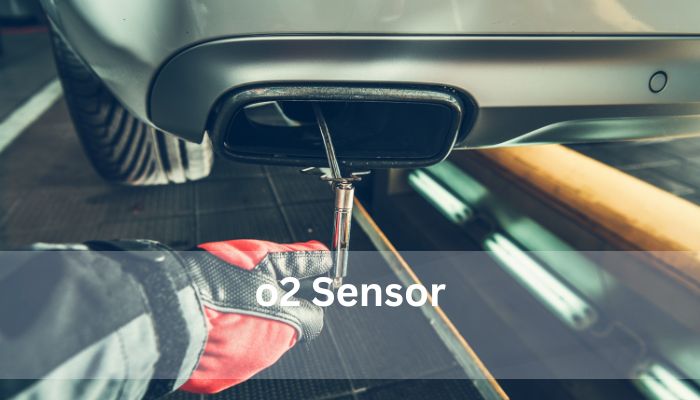How to Pass Emissions Test with Bad o2 Sensor
Are you worried about passing an emissions test with a faulty O2 sensor? You’re not alone. Many car owners find themselves in this situation and are unsure of what to do. Fortunately, there are strategies that can help you pass the emissions test even if your car’s oxygen sensor is malfunctioning. In this blog article, we will discuss how to beat an emissions test with a faulty O2 sensor as well as provide tips for getting through the process without replacing it.
If you have a bad oxygen sensor, passing an emissions test can seem like an impossible task. However, it is possible to pass the test even with a faulty o2 Sensorhttps://landroverbar.com/o2-sensor-clip/. Here are some tips on how to do just that:
1. Get your vehicle serviced regularly – Regular maintenance and tune-ups will help keep your car in good running condition and reduce the number of pollutants emitted from your exhaust system. Make sure to check all filters, spark plugs, air intake systems, and other components for proper operation before taking the emissions test.
2. Check for vacuum leaks – Vacuum leaks can cause engine misfires which result in higher levels of pollutants being released into the atmosphere during combustion cycles; this could lead to failing an emissions test if not addressed properly beforehand. Make sure there are no cracks or holes in any hoses or pipes leading from your engine block as these may be causing a leak somewhere along its route
3. Replace faulty parts – If you have identified any parts that need replacing due to wear-and-tear or malfunctioning then make sure they are replaced prior to taking the emission tests as these could also contribute towards higher pollutant levels being released into the atmosphere during combustion cycles. This includes things such as spark plugs, air filters, fuel injectors, etc., so make sure they’re all working correctly before attempting an emission test!
4. Use fuel additives – Fuel additives help clean out carbon deposits within engines which can reduce harmful pollutant levels when combusted through exhaust systems; this should help improve chances of passing an emission test when used regularly (as per manufacturer instructions).
5. Utilize catalytic converters – Catalytic converters work by converting harmful gasses produced by internal combustion engines into less toxic substances; this helps reduce overall pollution output from vehicles significantly so ensure yours is functioning correctly prior to testing!
How to Beat an Emissions Test with a Faulty O2 Sensor

Failing an emissions test can be a major headache, especially if you have a faulty O2 sensor. Fortunately, there are some steps you can take to beat the test and get your vehicle back on the road.
The first step is to make sure that all of your other components are in good working order. This includes checking for any vacuum leaks or broken hoses and replacing them if necessary. You should also check that all spark plugs and wires are in good condition as well as make sure your air filter is clean and free from debris. If everything else looks okay then it’s time to focus on the O2 sensor itself.
If possible, try cleaning or replacing the O2 sensor before taking it in for testing again – this could help improve its performance enough so that it passes inspection without issue.
Read More: Click Here
Strategies for Passing an Emissions Test When Your Car’s O2 Sensor is Malfunctioning
When it comes to passing an emissions test, having a functioning oxygen sensor is essential. Unfortunately, if your car’s O2 sensor is malfunctioning, you may be concerned about how you’ll pass the test. Fortunately, there are some strategies that can help ensure success when taking an emissions test with a faulty O2 sensor.
The first step in preparing for the emissions test is to have your vehicle inspected by a qualified mechanic and get their opinion on what needs to be done in order to pass the exam. If they determine that replacing or repairing the O2 sensor will not fix the problem then other measures should be taken such as making sure all of your engine components are working properly and ensuring that any necessary repairs or maintenance has been completed prior to testing day.
Another strategy for passing an emission exam with a faulty O2 Sensor is using fuel additives specifically designed for this purpose which can help reduce harmful pollutants from escaping into the atmosphere during testing time. Additionally, make sure you use high-quality gasoline when filling up before heading off for inspection as lower-grade fuels tend to produce more pollutants than higher grades do thus increasing chances of failing due to excessive pollution levels being detected by sensors during testing time.
Tips for Getting Through an Emissions Test Without Replacing the Bad O2 Sensor

Getting through an emissions test without replacing the bad O2 sensor can be a tricky task, but it is possible. The first step is to understand what the O2 sensor does and how it affects your car’s performance. The oxygen (O2) sensor measures the amount of oxygen in your exhaust system, which helps determine how efficiently your engine is running. If there’s too much or too little oxygen present, then you may fail an emissions test due to high levels of pollutants being released into the atmosphere.
The next step is to check for any potential problems with your vehicle that could be causing a faulty reading from the O2 sensor such as clogged air filters or worn spark plugs. You should also make sure that all other components related to emission control are functioning properly, including catalytic converters and EGR valves if applicable.
Is it Possible to Pass an Emissions Test with a Defective Oxygen Sensor?
It is possible to pass an emissions test with a defective oxygen sensor, but it’s not recommended. Oxygen sensors are essential components of any vehicle’s exhaust system and play a critical role in reducing harmful emissions from the engine. When they become faulty or damaged, they can cause your car to produce more pollutants than necessary. This can lead to higher levels of carbon monoxide and other dangerous gases being released into the atmosphere, which is why passing an emissions test with a defective oxygen sensor should be avoided at all costs.
The best way to ensure that you pass your next emissions test is by replacing any faulty or damaged oxygen sensors as soon as possible. Doing so will help reduce air pollution and keep your vehicle running smoothly for years to come.
Proven Tactics for Passing An emissions test Despite a Faulty Oxygen Sensor

Passing an emissions test can be a daunting task, especially if your vehicle has a faulty oxygen sensor. Fortunately, there are some proven tactics you can use to ensure that your car passes the test and keeps you on the road.
First and foremost, make sure that all of the maintenance items recommended by your vehicle’s manufacturer have been completed in a timely manner. This includes regular oil changes, spark plug replacements, and air filter replacements – all of which will help keep emissions levels low during testing. Additionally, check for any leaks or other issues with hoses or gaskets that could lead to higher-than-normal emission levels during testing.
If possible, try to drive your car for at least 20 minutes before taking it in for an emissions test as this will allow time for components such as catalytic converters and oxygen sensors to warm up properly so they can function correctly during testing. Also, consider using fuel additives designed specifically to reduce exhaust pollutants prior to taking it in for its inspection; these products are available from most auto parts stores and may help improve results significantly when used regularly over time.


